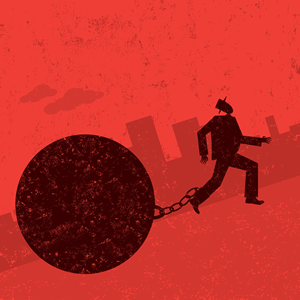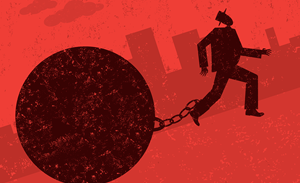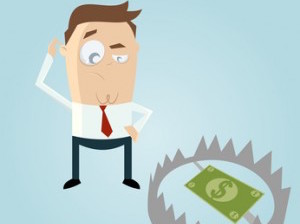Shuffling Sideways: What If Markets Are Bound for Chronic Underachievement?
by Roger Mitchell, CFA Institute
All the recent market scares have been driven by the same implied menace. Whether it’s another round of anxiety about Greece, another head fake by the US Federal Reserve on raising rates, or fears about China’s economy, investors appear to be nervous about a major correction, downturn, or crash.
But what if the real danger were of a very different sort? What if the greater risk today is chronic underachievement?
In 2005, I interviewed hedge fund manager Cliff Asness for a report on hedge funds and systemic risk, and he said something that stuck with me: “I tend to think the worries about systemic risk taking down the financial system are overblown. I think the bigger danger is mildly disappointing returns to many for the next few years.”
Of course that was a decade ago, facing a different outlook for the global economy and markets. Along came the global financial crisis in 2008, with all its disruptions and dislocations. The point isn’t about the accuracy of Asness’s conjecture. Rather, it’s the idea of disappointing returns extending for a period of years. In some ways, doesn’t that scenario describe the world we have been living in for a while? How long have we heard about pension funds being unable to generate sufficient returns to cover their liabilities or low yields forcing investors to chase returns by moving farther out on the risk spectrum?
In 2011, demographer Richard Hokenson (founder of demographic economic consulting firm Hokenson & Company) made two predictions based on the impact of aging or shrinking populations in key markets. First, the world was in a race to zero interest rates. Second, efforts by central banks to reflate economies would fail because the demographic reality was structurally disinflationary.
Another of Hokenson’s observations also sounds very familiar: “If you look in the press, everybody believes in inflation — that (then Fed Chairman) Bernanke is going to reflate us, that inflation is going to be back next year or a year after, and that interest rates will be higher.” Today, the Fed is still expressing concern about the prospect of inflation and the need to raise interest rates to a “normal” level. Over and over again, the US economy is believed to be on the verge of breaking out of its historically slow recovery. The Fed hints that it will move to get ahead of accelerating inflation. Yet somehow the inflection point always gets postponed.
When Hokenson was invited to revisit his predictions in 2013, nothing had changed. Policymakers were still trying to reflate by using the money supply to drive demand. Many people expected that money creation would lead to inevitable inflation. When it failed to happen, they just pushed the inevitable tipping point out another year. Today, we’re still waiting. In some cases, the race to zero has gone past the finish line, running all the way to negative interest rates.
The eurozone’s dance with Greece has followed a similar pattern. There seems to be an annual ritual in which all the partners have to face the music, but they always find a way to keep shuffling sideways. Maybe the dance can go on longer than we imagine is possible.
And maybe some assumptions need to be reconsidered. Occasionally, I re-read an essay titled “Awaiting the Wildness,” published in the Spring 1995 issue of the Journal of Portfolio Management. It was a brief editor’s note by the late Peter L. Bernstein, who is probably best known as the grand historian of modern investment theory, which he described as “one of the great intellectual leaps in the history of thought.” Even so, his writings express misgivings about the tendency of applied theory and quantitative methods to deceive us and blunt our imaginations.
I re-read the essay because it reminds me of a noteworthy point. “In real life, past data constitute a sequence rather than a set of independent observations,” Bernstein wrote. “That is where the wildness lurks. As [economist] Paul Samuelson has pointed out, we have only one sample of the economy and the capital markets, not thousands of separate, autonomous, and stochastic numbers. Probabilities calculated from frequency distributions of events that have already occurred assume that those data enjoy a kind of independence that cannot exist in real-time information.”
Most of us are poised to believe that markets will do something erratic. That is our implicit null hypothesis. An overvalued market will be corrected. An irrationally exuberant market will crash. A slowing economy will cause a bear market. A rapidly expanding economy will drive a boom. But the only reason we believe in this null hypothesis is because we can look back at a single historical sequence that seems to confirm our bias. Even if the bias happens to point in the right general direction, how can we really know it with any confidence?
To this point, Bernstein suggested changing our fundamental perspective. “I propose that the null hypothesis of our work should be that the ideas confirmed by empirical tests in the computer are in error,” he wrote.
Taking this rule beyond computer models and applying it to heuristic biases, what if we changed the null hypothesis from “the market is awaiting a correction, downturn, or crash” or “the long fuse of re-inflation will be lit soon”? What would the expected future look like if our null hypothesis instead became “As a result of converging circumstances, we live in a structurally disinflationary period that promises disappointing returns for many investors over the next few years”? Do we have enough evidence to disprove this hypothesis? At least as a thought experiment, perhaps the exercise might have some value, enabling us to look at trends and patterns from a different angle.
Instead of expecting the wildness, maybe investors should be projecting the mildness.

If you liked this post, don’t forget to subscribe to the Enterprising Investor.
All posts are the opinion of the author. As such, they should not be construed as investment advice, nor do the opinions expressed necessarily reflect the views of CFA Institute or the author’s employer.
Image credit: ©iStockphoto.com/retrorocket














